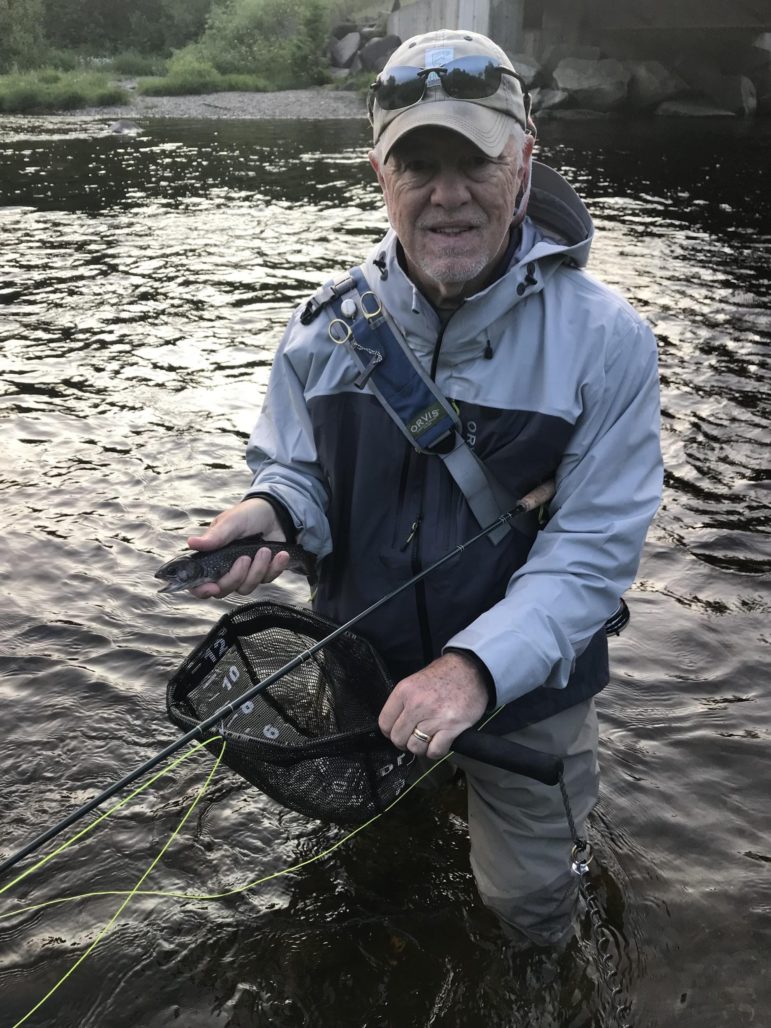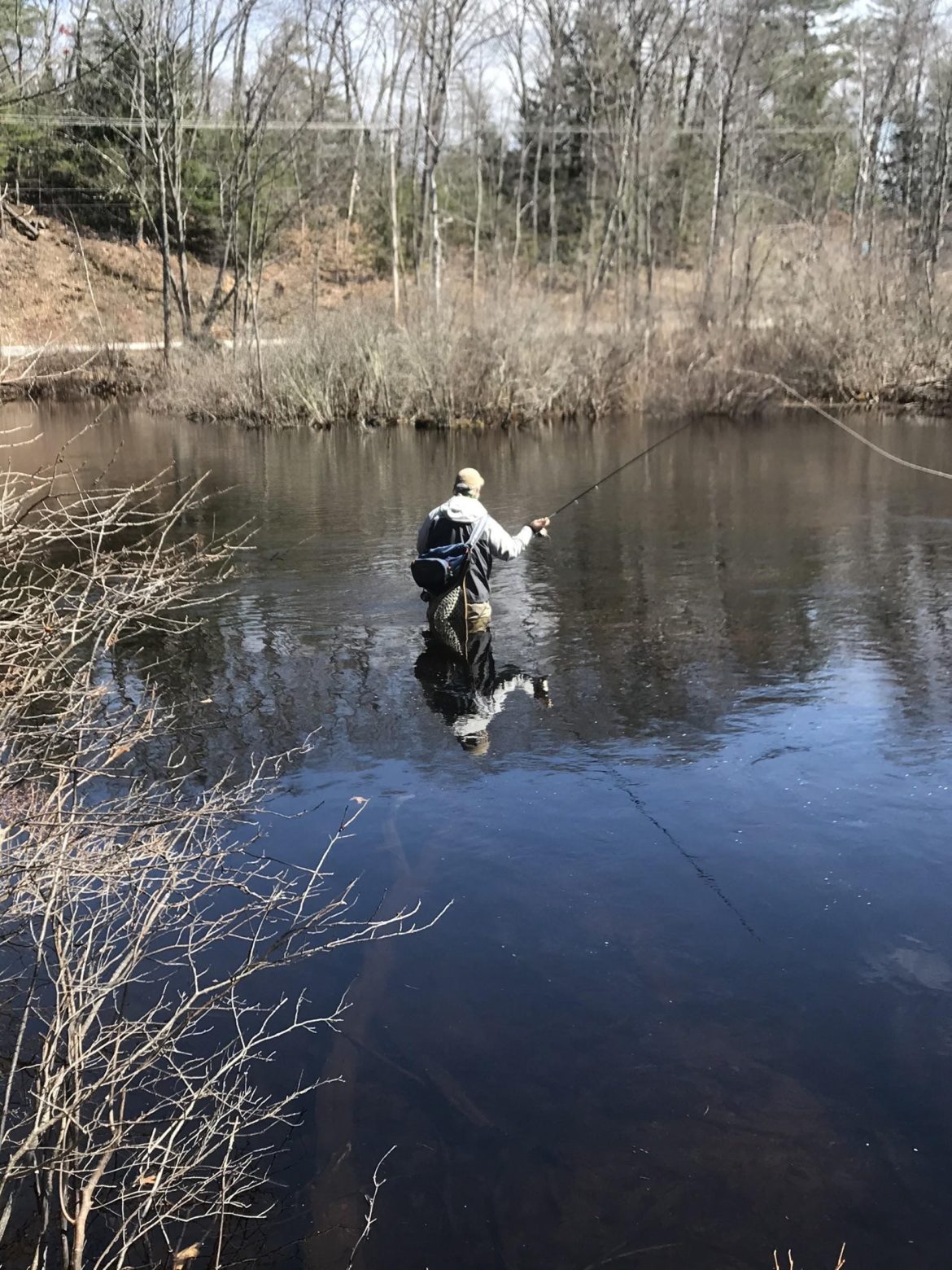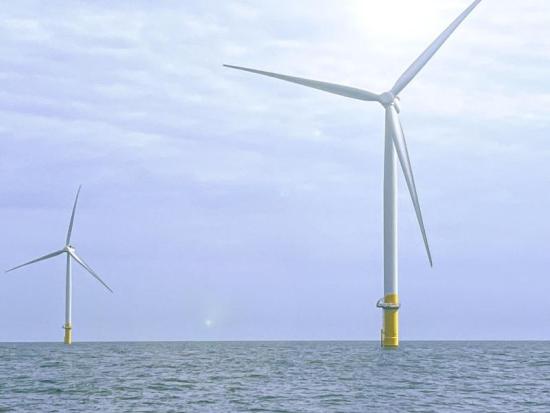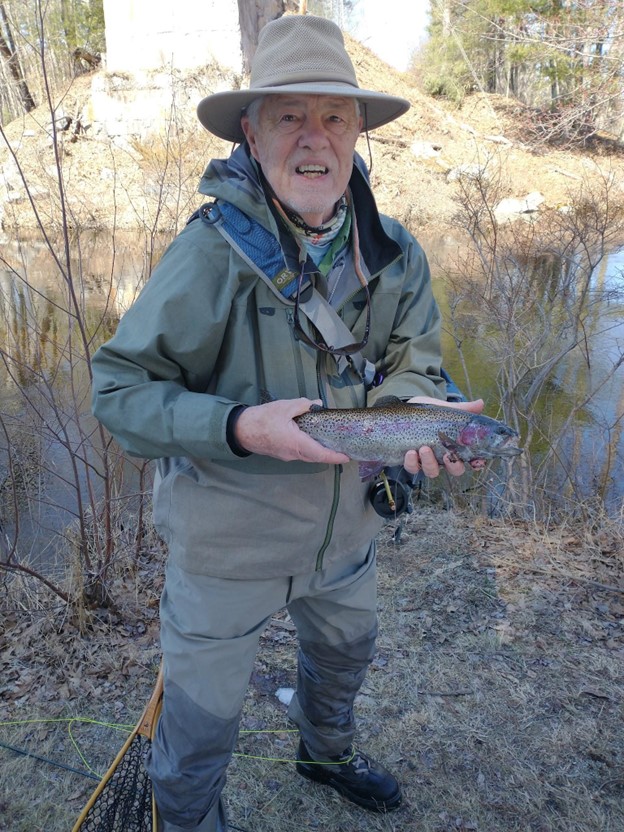WRITING ON THE FLY
By GEORGE LISET
Ice out on Lake Winnipesaukee is called when the M/S Mount Washington cruise ship can navigate from Alton Bay to Center Harbor, Weirs Beach, Meredith and Wolfeboro. Ice out records go back to 1887 and is determined by an airplane observer who flies over the lake a number of times a day.
There seems to be no rhyme nor reason to the ice out dates. Ice out has been as early as late March/ early April to as late as late April/ early May. No matter when Ice Out occurs, the water is especially cold, even in waders.
This year it was April 6 at 8:59 a.m.

For the fly fisherman, Ice Out means a change of activity in the rivers and streams that flow into Winnipesaukee. It is a time when the Suckers swim up to spawn in the gravel of the easy flowing river. It also means that other fish such as Landlocked Salmon and Lake Trout head up into the rivers to feed on the Sucker eggs.
Knowing this, along with a number of other fishermen, I drove north to a couple of my favorite fishing spots. Driving by some of the more accessible spots I noticed a few cars and fishermen enjoying the day with a fly rod in their hands. As I drove a little farther I started getting excited to be on the water with the prospect of getting into a good-sized fish.
When I arrived at my spot, I put on my gear and rigged up my fly rod. I had decided to start off nymphing using a size 12 bead head nymph with a size 16 bead head Hare’s Hair nymph dropper. I added a little weight to my line to make sure I got on the bottom where I knew the fish would be schooling and feeding since the river was running a little high from a previous rain.
I started fishing up the river, hitting all the spots where I thought the fish might be holding. I could see the Suckers holding in groups, some even swimming between my legs as they fought to get into position with an egg laying female. I knew that there should be some action with other fish close behind, but alas, no luck.
I decided to rest the section of water I was fishing and to change tactics. I changed my flies and put on an egg pattern attractor with a bead head nymph dropper. Surely this would work. After a few minutes I started back down the river and worked my way back up.
When you are nymphing with a little weight on your line and using a dropper rig you are going to lose flies. That is a fact. A good reason to tie your own if you cannot buy them inexpensively. Many times, you can wade out and unhook them from the rock or stick on the bottom.
I was a little way up the river when I got snagged on the bottom. I started gently pulling on the line with the hopes that I wouldn’t lose another fly when the line started moving. It felt like the stick I was hooked on was coming up off the bottom when all of a sudden the line started moving slowly up the river. I had hooked onto a big Sucker.
Suckers are like the big kid at the end of a tug-of-war rope, hard to move. As I was trying to bring the fish in, I grabbed for my net. Bad move. I let off just enough pressure for him to throw the hook. Lesson learned. It was still fun. I finished working up stream with no luck.
On my way home I stopped to check on the section of river I had passed earlier. I talked to a number of the fly fishers in the parking area. All had similar experiences to mine. They could see the fish but couldn’t get any to bite; however, they were all coming back tomorrow. Me Too!
George Liset of Dover is an outdoor writer and avid fly fisherman who shares insights of his time on the water exploring New Hampshire streams and rivers as well of those around New England. George is a graduate of Wheaton College, Illinois, and the University of New Hampshire.





